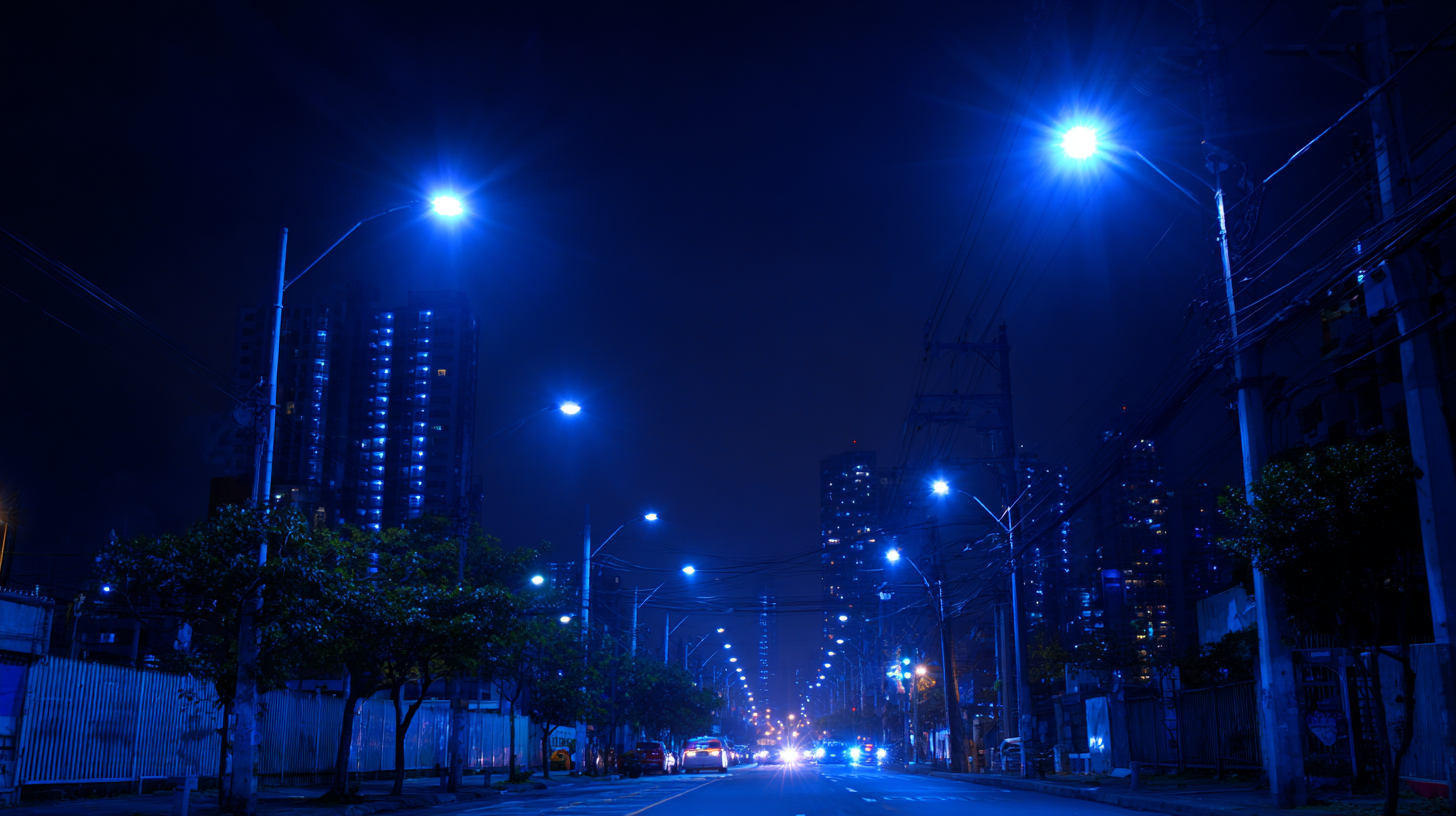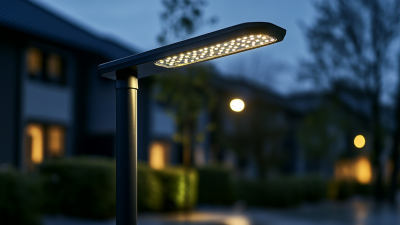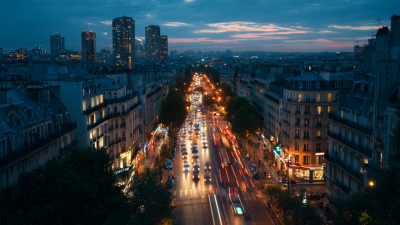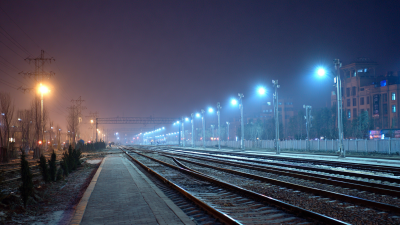Exploring the Evolution of Street Lights and Their Impact on Urban Safety and Environment
The evolution of street lights has significantly influenced urban safety and the environment, highlighting their critical role in modern city planning. Historically, street lights were primarily designed to provide illumination, but recent studies show that they also enhance security, reduce crime rates, and promote safer pedestrian pathways. According to the National Institute of Justice, well-lit streets can decrease crime by up to 20%, demonstrating the vital connection between adequate lighting and public safety. Moreover, advancements in lighting technology, such as the transition from incandescent to LED street lights, have led to a 50% reduction in energy consumption, contributing positively to environmental sustainability. As urban areas continue to grow, understanding the multifaceted impacts of street lights becomes essential for creating safer, more livable cities while addressing the pressing challenges of energy efficiency and environmental degradation.

How to Trace the Historical Development of Street Lighting in Urban Areas
The historical development of street lighting has undergone significant changes over time, reflecting technological advancements and societal needs. Initially, gas lamps illuminated urban streets, providing basic safety and navigation. As urban areas expanded, the demand for more efficient and sustainable lighting solutions led to the introduction of electric lights in the late 19th century. Today's street lighting has evolved into a complex, smart infrastructure, with LED technology dominating due to its energy efficiency and long lifespan, drastically reducing electricity consumption and maintenance costs.

The transition to solar-powered street lighting systems represents a crucial step towards greener energy solutions. These systems incorporate photovoltaic panels that harness solar energy to power street lights, aligning with global efforts to combat climate change and reduce reliance on fossil fuels. The modernization of street lighting not only enhances urban aesthetics but also improves security in public spaces, making neighborhoods safer and more inviting. As cities continue to innovate and adapt, the impact of street lighting on urban safety and environmental sustainability will remain a vital focus in urban planning and design.
How to Assess the Impact of Street Lighting on Urban Safety and Crime Rates
Street lighting plays a crucial role in urban environments, influencing both safety and crime rates. To assess the impact of street lighting effectively, it's essential to consider various factors such as brightness, placement, and design. Increasing the luminance in certain areas can deter crime, as well-lit spaces are less appealing to potential offenders. Additionally, ensuring that lights are strategically positioned in high-risk areas can enhance visibility and community perception of safety.
**Tips:** When evaluating street lighting initiatives, involve community feedback to identify areas most in need of enhanced illumination. This approach not only improves safety but also fosters a sense of community ownership. Furthermore, consider adopting energy-efficient LED lighting, as they provide better visibility while reducing environmental impact.
Regular assessments and innovations in street lighting technology can significantly enhance urban safety and reduce crime rates. Collaborating with urban planners to incorporate smart lighting solutions that adapt to real-time conditions can also create safer streets. Ensuring that your city embraces these advancements can lead to a safer, more welcoming environment for all residents.

How to Evaluate the Environmental Considerations of Different Street Light Technologies
The evaluation of environmental considerations in street light technologies is crucial for urban sustainability. Traditional high-pressure sodium (HPS) lights have been widely used, emitting significant light pollution and consuming more energy. According to the U.S. Department of Energy, switching to LED (Light Emitting Diode) technology can result in energy savings of up to 50-75%, demonstrating a substantial reduction in carbon footprints. LEDs also have a longer lifespan, which translates to fewer replacements and less waste.
Moreover, smart street lighting systems, which utilize sensors and adaptive controls, not only enhance energy efficiency but also reduce light pollution, thus fostering biodiversity. A study by the International Dark-Sky Association highlighted that optimized lighting can decrease the adverse impacts on nocturnal wildlife, further underlining the ecological benefits of modern technologies. As cities transition to greener street lighting solutions, it is essential to consider both energy consumption and the broader environmental impacts to create safer and more sustainable urban environments.
Exploring the Evolution of Street Lights and Their Impact on Urban Safety and Environment
| Street Light Technology | Energy Efficiency (lm/W) | Average Lifetime (years) | Environmental Impact (CO₂ emissions kg/year) | Safety Impact (Accident Reduction %) |
|---|---|---|---|---|
| Incandescent | 15 | 1 | 500 | 5 |
| Fluorescent | 50 | 7 | 300 | 10 |
| LED | 150 | 15 | 100 | 25 |
| Smart LED | 170 | 20 | 80 | 30 |
How to Implement Smart Lighting Solutions for Improved Urban Safety and Sustainability
Smart lighting solutions are transforming urban environments by enhancing safety and promoting sustainability. According to a report by the International Dark-Sky Association, cities that have adopted smart lighting technology have recorded up to a 30% reduction in street crime due to better visibility and adaptive lighting that responds to real-time conditions. This adaptability not only increases safety for pedestrians and cyclists but also strengthens community engagement as well-lit streets encourage more outdoor activity in the evening.
Moreover, the implementation of smart lighting can significantly contribute to energy conservation. The U.S. Department of Energy reports that smart LED streetlights consume up to 50% less energy compared to traditional sodium-vapor lights. These advanced systems can also be programmed to dim or brighten based on pedestrian presence or ambient light levels, which further optimizes energy use. As cities continue to prioritize environmental sustainability, integrating smart lighting solutions presents a compelling opportunity for reducing carbon footprints while preserving urban safety.
How to Engage Communities in Discussions about their Local Street Lighting Needs
Engaging communities in discussions about their local street lighting needs is crucial for enhancing urban safety and promoting environmental sustainability. Research indicates that well-lit streets can reduce crime by up to 20%, according to a report by the Institute of Transportation Engineers. Community input is vital in identifying areas that require better lighting, as localized perceptions of safety can significantly differ. By hosting town hall meetings, workshops, or utilizing online platforms, municipalities can gather valuable feedback from residents on their lighting preferences and concerns, fostering a sense of ownership and responsibility toward public spaces.
Moreover, involving residents in the decision-making process can lead to more environmentally friendly lighting solutions. The adoption of energy-efficient LED street lights, which research by the U.S. Department of Energy shows can reduce energy costs by 50-70%, can be more effectively implemented when community preferences are understood. Communities can also explore the integration of smart lighting systems that adjust to pedestrian activity, further enhancing safety while minimizing light pollution. By prioritizing community engagement, cities can create lighting solutions that not only address safety and environmental factors but also strengthen community ties.
Related Posts
-

Exploring Varieties of Street Lights and Their Best Applications for Global Buyers
-

How to Choose the Perfect Street Lights for Your Outdoor Spaces
-

How to Choose Energy Efficient Street Lights for Sustainable Urban Development
-

Ultimate Resource for Sourcing Solar Lights Globally
-

How Rising Tariffs Sparked Innovation in Chinese Manufacturing of the Best Wall Lights
-

Top Strategies for Choosing the Best Track Lights for Your Space





